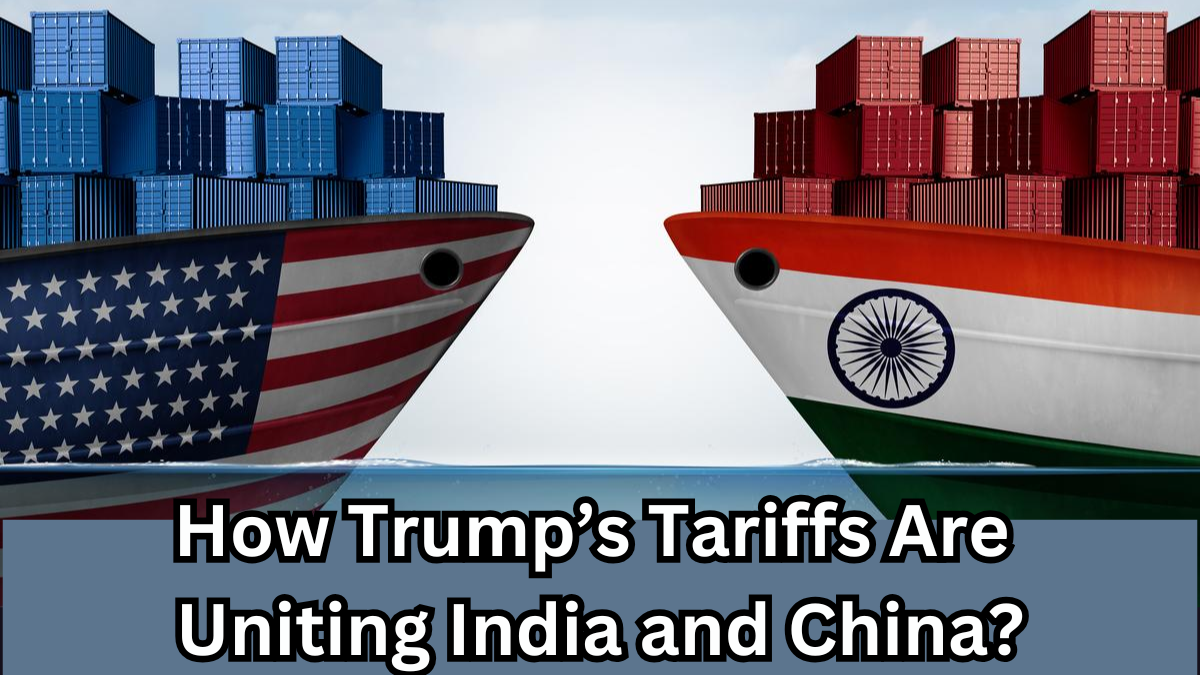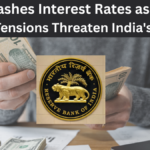In a twist of geopolitical fate, former U.S. President Donald Trump’s aggressive tariff war may have done what decades of diplomacy couldn’t — brought India and China closer on economic grounds. The shift is subtle but significant, as both nations begin to explore cooperation in response to Washington’s hardline trade tactics.

The Unexpected Alliance: When the Elephant Met the Dragon
When Chinese Foreign Minister Wang Yi poetically spoke of making the “dragon and elephant dance,” it wasn’t mere symbolism. It marked a potential turning point in Asia’s diplomatic narrative. At the heart of this unexpected alignment lies Trump’s sharply escalated trade war with China — one that has sent ripple effects far beyond the Pacific.
What Sparked This Shift?
Trump’s trade war intensified with a staggering 104% tariff on Chinese goods.
China retaliated by:
-
Slapping a 50% tariff on U.S. imports
-
Pushing U.S. goods prices in China up by 84%
This economic friction has prompted China to reassess its regional relationships — and India seems to be in the spotlight.
🇨🇳 China’s Strategic Pivot Toward India
As U.S. pressure mounts, China is extending an olive branch to India, calling for collaboration to resist trade unilateralism.
Key Developments from China’s Side:
-
The Chinese Embassy in India publicly called for stronger bilateral economic cooperation.
-
Spokesperson Yu Jing emphasized mutual benefits, stating:
“The China-India economic relationship is based on mutual benefits… the largest developing countries should stand together.”
This was not just an invitation — it was also a warning to Washington that “trade wars have no winners.”
China’s Economic Power in Perspective
| Economic Indicator | China’s Standing |
|---|---|
| Contribution to Global Growth | ~30% annually |
| Current Tariff on U.S. Goods | 84% (after 50% hike) |
| Position on Multilateralism | Strongly supportive |
🇮🇳 India’s Measured Response: Diplomacy Over Drama
India, while affected, has chosen not to retaliate — at least for now. Its approach is quiet, calculated, and diplomatic.
India’s Current Tariff Landscape
| Tariff Category | Rate |
|---|---|
| Base Tariff (e.g., steel) | 10% |
| Additional Tariff (auto parts, seafood) | 25% |
| Overall Tariff Imposed by U.S. | 26% |
Despite being labeled a “big abuser” of tariffs by Trump, India has escaped the harshest brunt — likely thanks to Modi and Trump’s cordial relationship.
India’s Exports Under Threat
Though India hasn’t hit back, its key export sectors are feeling the heat.
| Export Sector | U.S. Tariff Impact | Estimated Export Loss |
|---|---|---|
| Pharmaceuticals | Potential new levies | TBD |
| Auto Parts | 25% additional tariff | High |
| Seafood | 25% additional tariff | High |
| Overall Export Risk | — | Up to $5.76 billion |
With total exports to the U.S. valued at $89.91 billion (2024), India’s economy faces real consequences if the tariff tensions continue.
From Galwan to Groundwork: Renewed India-China Engagement
Tensions following the Galwan clash in June 2020 nearly froze bilateral ties. However, signs of de-escalation are emerging:
-
October 2024: Both nations reached a patrolling agreement in Ladakh
-
A Modi-Xi meeting soon followed, signaling renewed diplomatic warmth
China’s Foreign Minister even noted:
“We should never allow bilateral relations to be defined by the boundary question.”
A New Solidarity in the Global South?
Trump’s trade strategies may have had unintended consequences:
-
They’ve hardened China’s resolve against U.S. economic tactics.
-
They’ve quietly nudged India and China into economic alignment, if not full partnership.
-
Together, they could become a strong voice within the Global South, advocating against Western trade dominance.
This emerging cooperation — even if pragmatic — could reshape power dynamics in global trade and diplomacy.
FAQs
1. Why did China suddenly seek closer ties with India?
Trump’s aggressive tariffs made Chinese exports to the U.S. significantly more expensive. China, facing economic isolation, began seeking partnerships within Asia — and India was a logical choice due to its market size and geopolitical influence.
2. Is India fully aligning with China?
Not exactly. India is maintaining a cautious stance. While it hasn’t imposed retaliatory tariffs, it also hasn’t fully embraced China’s cooperative overtures. It’s more of a strategic balancing act than an alliance.
3. How badly are Indian exports to the U.S. affected?
Certain sectors — particularly auto parts and seafood — are seeing increased tariffs up to 25%, potentially affecting billions in trade. India’s overall export risk to the U.S. could reach $5.76 billion in 2024 alone.
4. Could this lead to long-term India-China cooperation?
It’s possible, especially economically. However, historical tensions and geopolitical rivalries mean the relationship will likely remain cautious and transactional, rather than deeply allied.
Click here to learn more




